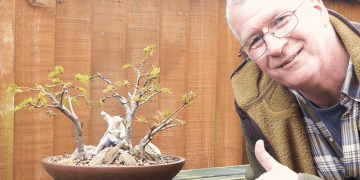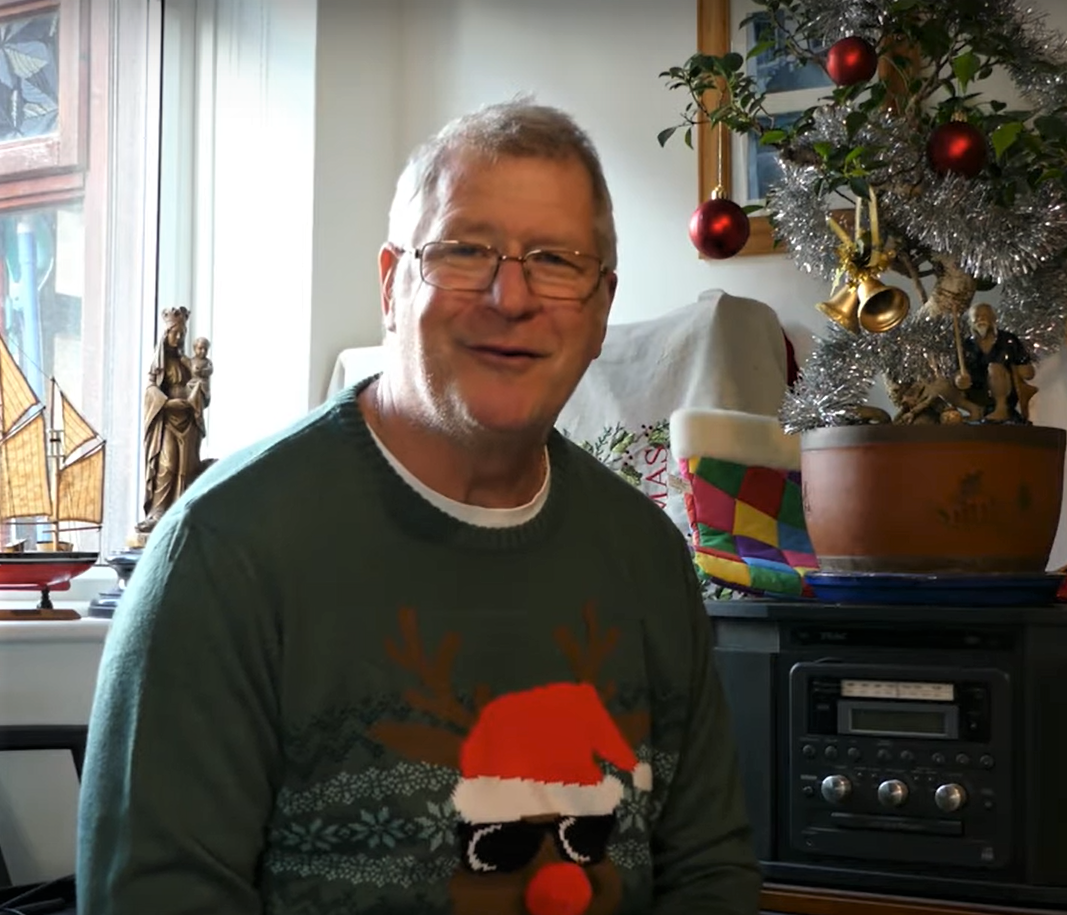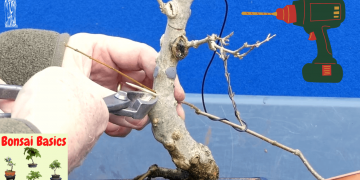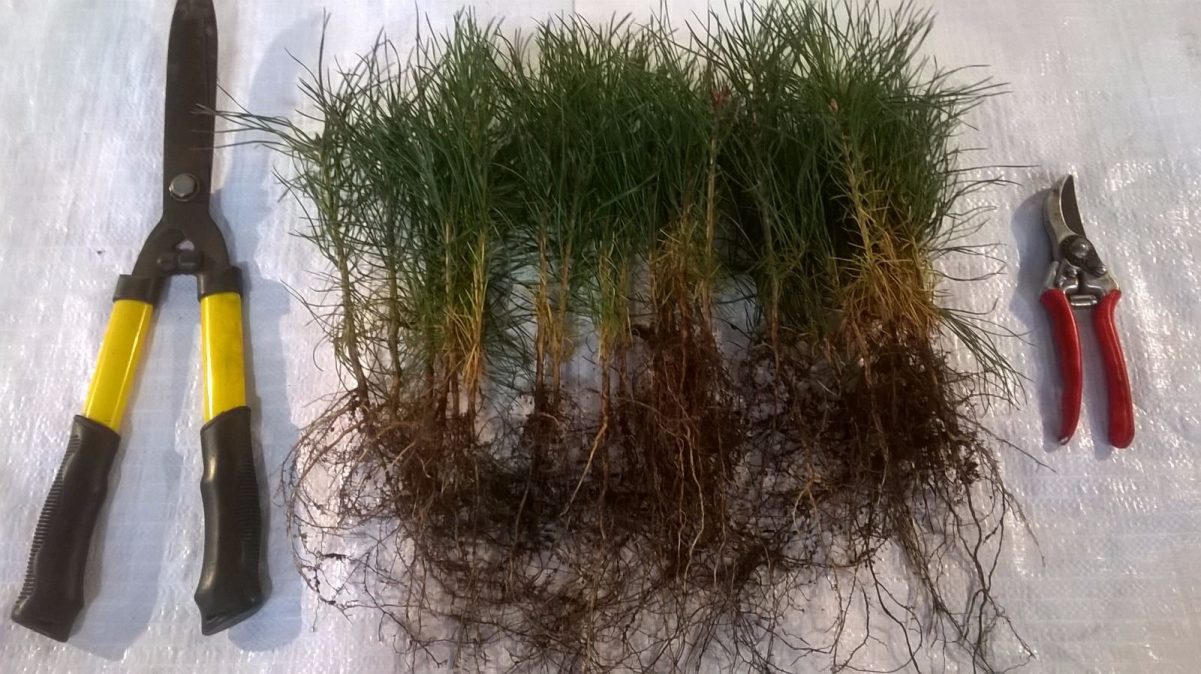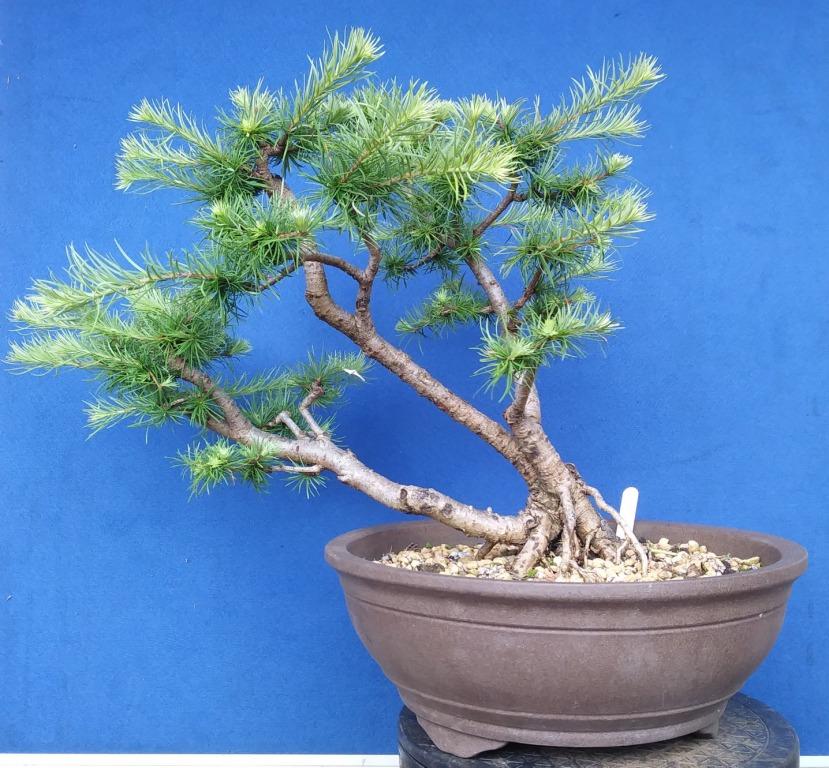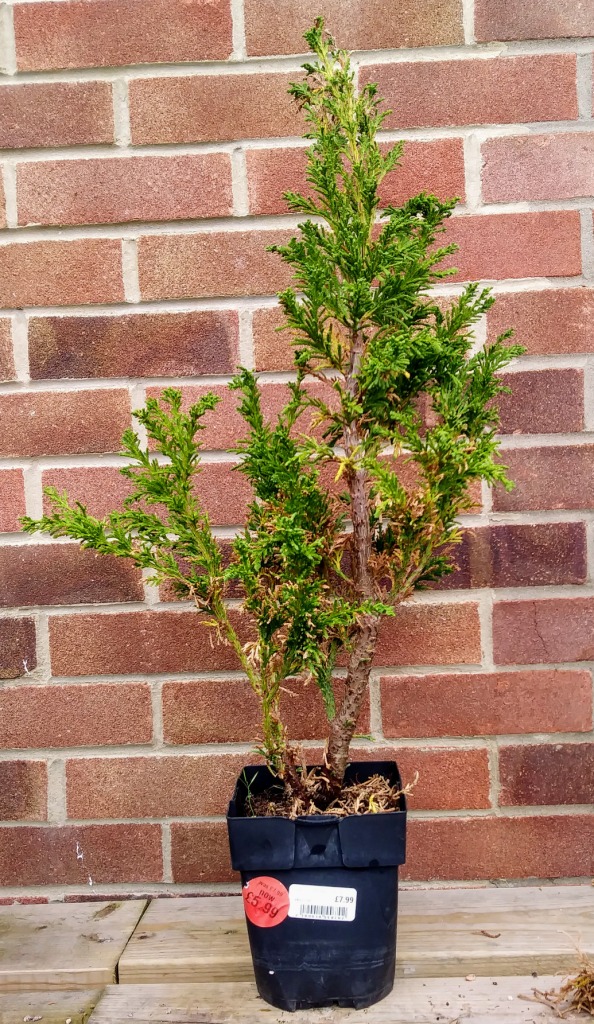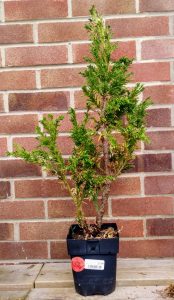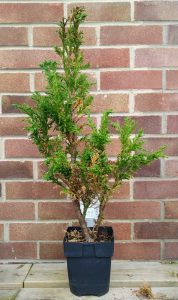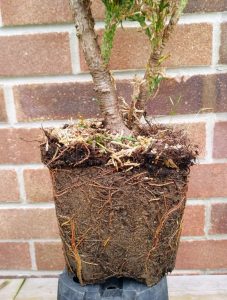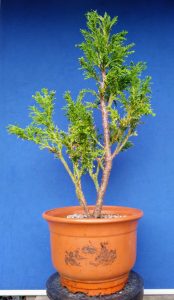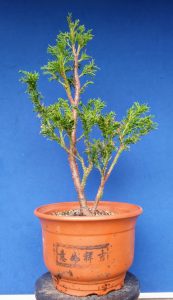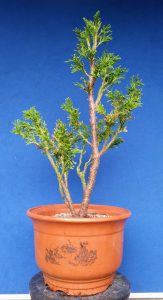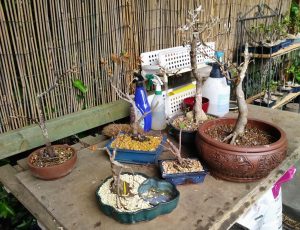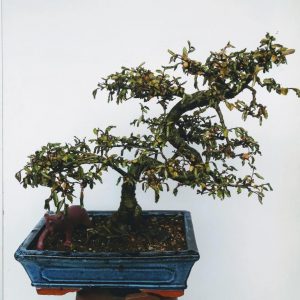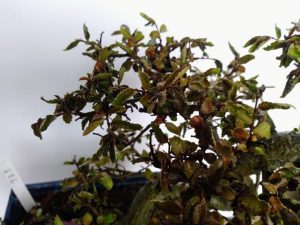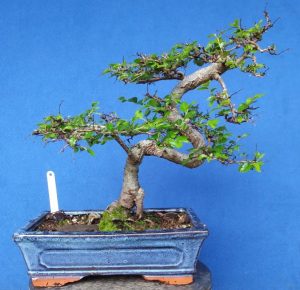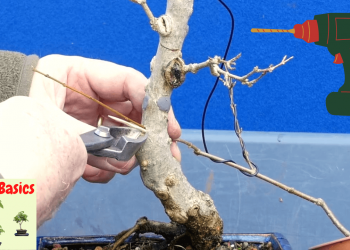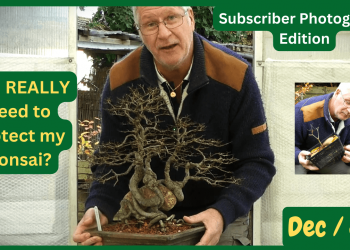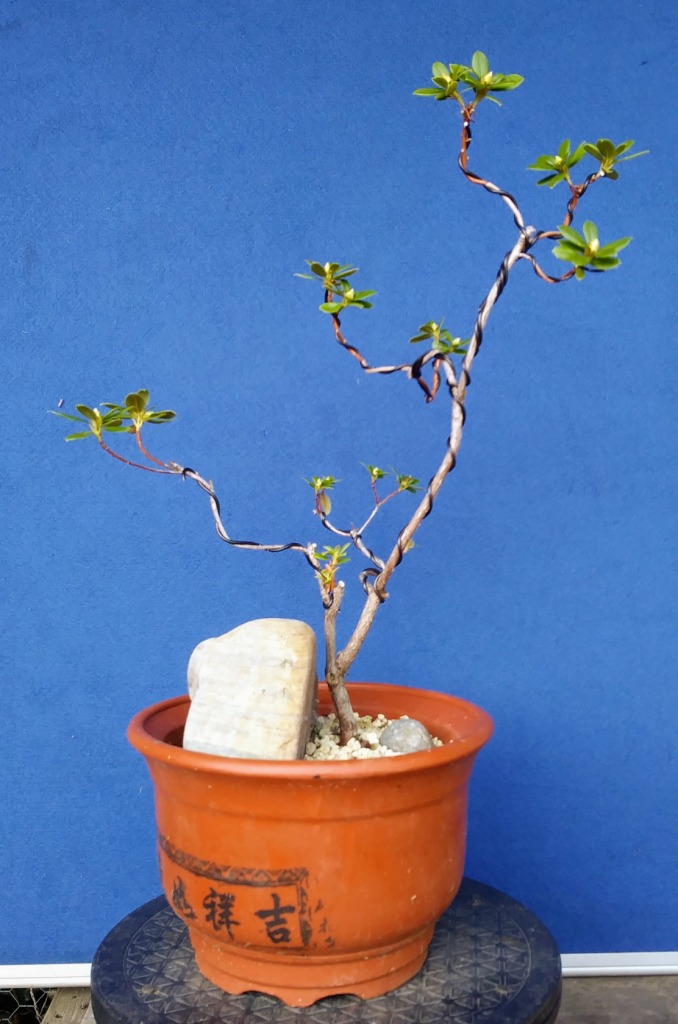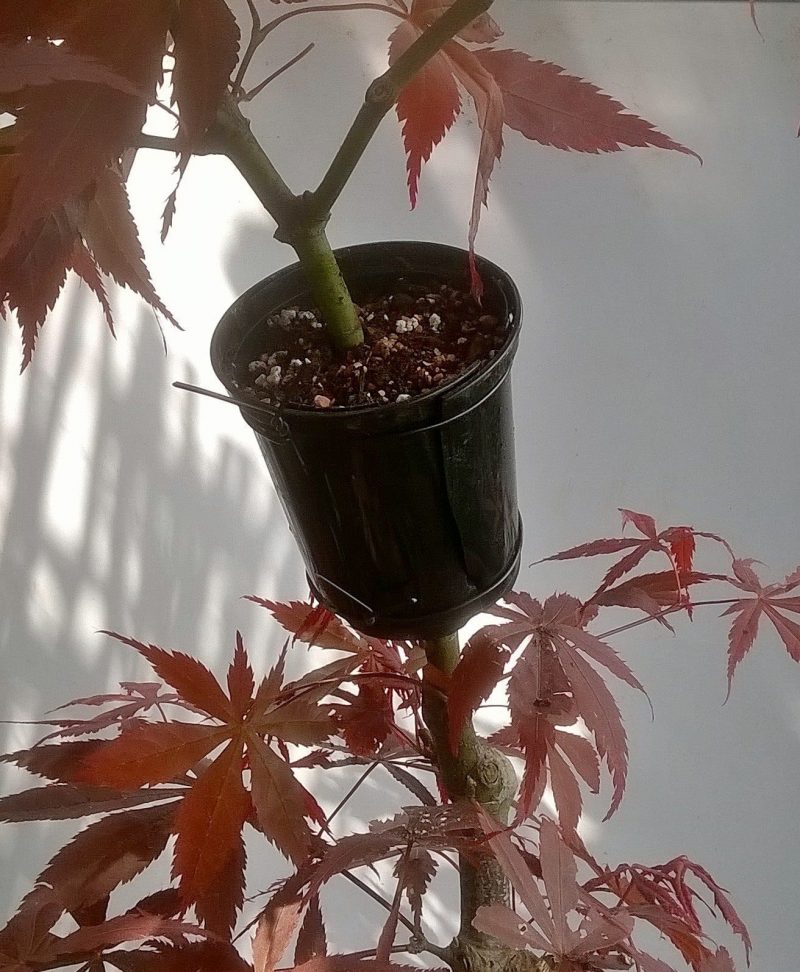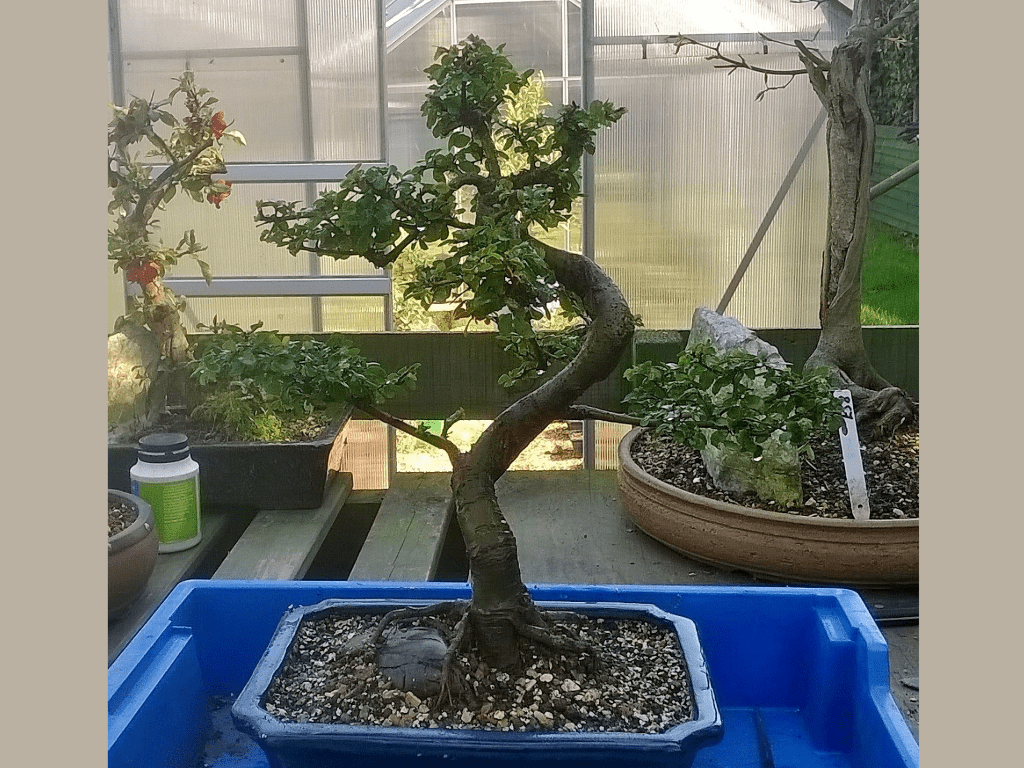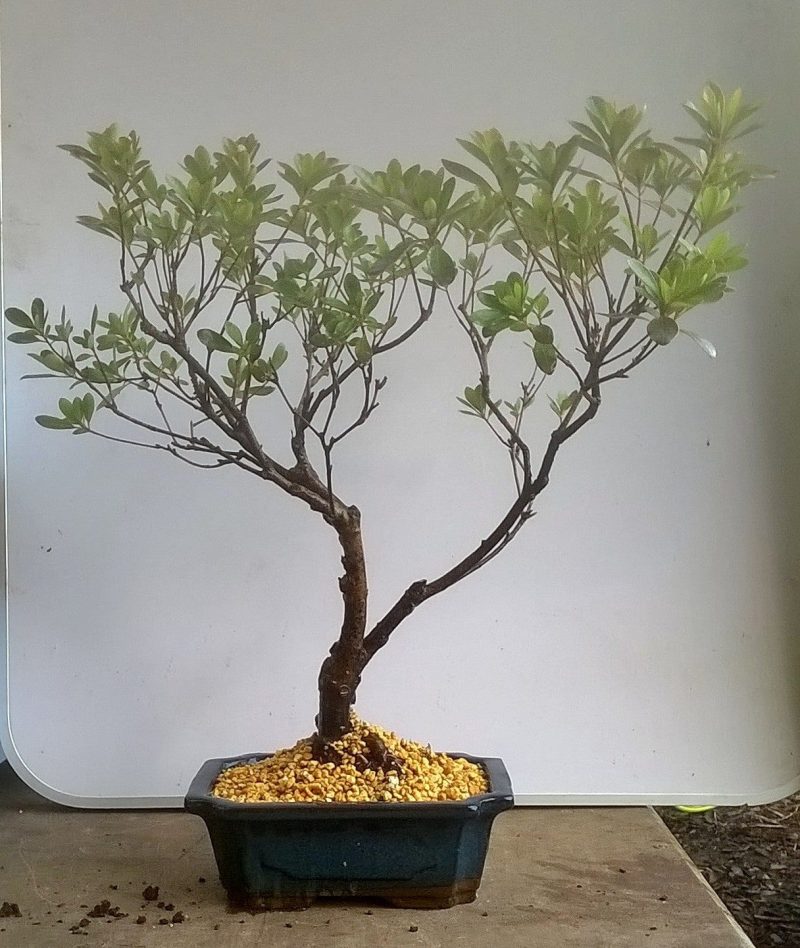So, as the end of summer rapidly approaches, I find my thoughts wandering eagerly to a time of rest. The past 5 months have been hectic and despite the enjoyment, I am definitely ready to take a break. However, we are not quite at that time yet…
Now is often a great time to start scouring the nurseries for unwanted ‘summer-damaged’ stock. Normally I will find dwarf azalea or potentilla but this week I was lucky enough to discover a Hinoki Cypress. Although I have never worked on this genus before, the price reduction to just £5.99 was too good to resist 🙂
The rules for purchasing ‘bargain-basement’ nursery stock remain the same:
- Check beneath the soil for signs of inverse taper on the base of the trunk
- Is there a good number of usable branches (not just 2 dimensions)
- Is it relatively healthy (I am sure there will be some obvious dieback)
- Is there a unique feature to seperate it from ‘the rest’?
- Is it cheap enough that it dying will not be a big drama 🙁
You must get you fingers dirty before you make that final decision! I have pulled this out of the plastic container and immediately noticed healthy white roots. It is also not root bound so I could get away with leaving it ‘as is’ during styling.
It has a unique twin trunk feature which means it is very likely to have a strong base for the future nebari to develop. I had a little dig under the surface and could see that inverse taper would not be a problem.
Definitely worth paying the price 🙂
When I got it home I drenched it and then left it in a shady part of the garden until I had a chance to do some research. I always take the time to learn about my tree before I jump in with the chainsaw! I was satisfied that basic structural work could be done safely and because the root ball was nice and healthy I chose to do a very simple ‘slip pot’ into a bigger container to protect it through the winter.
I ‘m still not entirely certain which will be the front for this design. I have decided to wait until next year and just let the tree recover and push out new growth in 2022. I may yet remove some more lower branches and apply wire sometime next year. The main priority for me is allowing the tree time to develop a strong root base. Patience…patience…patience 🙂
And of course…now is a good time for taking cuttings. I obtained 8 usable shoots making sure to make clean cuts just below the point where the colour has changed from green to brownish. They are potted up in vermiculite and peat based mix and have plastic humidity ‘domes’. I will check them in about 6 weeks and hopefully see fresh growth. They will stay in the greenhouse through the winter.
And now for some bonsai 'home truths'.
Every year, no matter how careful I am, some bonsai just die. Sometimes it is due to mistakes I have made and sometimes it is just down to the environment. Whatever the cause – it happens and you must be prepared for this. When you take a tree out of its natural environment and make it grow in a small pot things will sometimes go wrong. The best we can do is to try and observe and understand how our bonsai grows and responds to different environmental factors.
Learn about the tree before you start to do any type of work on it. Remember, the tree is already unhappy that you are not letting it grow in the open so anytime you do anything else it will have some form of adverse affect. Hence, most of the pruning and shaping work is done in the spring when the tree is full of stored energy.
This year I had to say farewell to: a mature Japanese Maple, two ten-year-old Satsuki Azalea and several younger assorted varieties. I also had a near-miss with my prized Japanese White Pine and several Chinese Elms.
I think the Azalea died as a result of poor soil which allowed the roots to dry out during the hot sun. I have no idea why the large maple died – shame, it had a great nebari 🙁
So, the advice is to never totally give up on your tree. I always wait at least one year before consigning anything to the bonsai funeral pyre. At this moment two more of my ‘deaduns’ are sending out baby shoots from their root base. Granted, the tree will not be the same as before but at least it will have a chance to start again.
Now is also the time for the 3rd round of pruning on your Japanese Larch. Check those new shoots for tight buds close together and prune back to this point. If the internodal distance between buds is still large then cut back to the first whorl where you should hopefully activate two opposing buds. If you are unsure or your tree is still in development then leave things until next spring.
You should also be seeing a lot of leaves yellowing on your Satsuki Azalea. Don’t worry – it is perfectly normal. All I do is gently pluck them off the branch.
This is also the time to do light pruning on your Chinese Elm. All I do is cut back to the design silhouette and remove those pesky mealy bugs feeding off the trunk and branches!!!!
Happy bonsaiing 🙂

